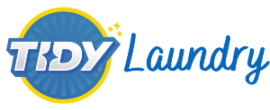The year was 1820, Thomas Jennings, an African-American living in the U.S., first invented a process called dry scouring, which was very similar to the dry cleaning we know today. This invention made him the very first African-American patent holder in the U.S. Some years later, a dye worker in France named Jean-Baptiste Jolly started his own dry cleaning business after he discovered that kerosene can remove clothing stains just by evaporating.
How Does Dry Cleaning Work: The Process
Step 1: Tagging The Garments
Ever wondered how dry cleaners work? Dry cleaners usually tag the garments with different numbers. This saves them time and prevents mishaps like handing the wrong garment to the wrong customer. It also helps in keeping the garments organized.
Step 2: Inspecting Stains And Pre-Treatment
In this step, dry cleaners will thoroughly inspect the customer’s clothes, detect all the marks and stains. Chemical pre-treatment will be used on the stains, and it will be left to settle as long as required. After enough time has passed, dry cleaners will brush the pre-treatment off.
Step 3: Putting The Clothes In The Machine
It’s time to put the dirty clothes into a dry cleaning machine. These machines are typically larger in size than washing machines and have better pace and temperature control. Solvents are put into the machine which cleans the dirt embedded in fabrics, and out come fresh and new-looking clothes.
Step 4: 2nd Inspection
In this step, the clothes will be inspected again to see if any stains are left. This also ensures that the garment isn’t damaged during the cleaning process.
Step 5: Adding Finishing Touches
Some dry cleaners intentionally remove buttons and decorations from your clothes in fear of damaging the fabric when using the machine. That’s why during later steps, they sew the decorations back on. Later on, dry cleaners will iron the clothes to make them look neat and wrinkle-free.
Care Symbols For Dry Cleaning: Dry Cleaning Symbols
Dry Clean Only
If your clothing care label has a square with a circle inside it, that means your clothes are dry clean only. A circle around the X over a bucket symbol also means the same.
Do Not Dry Clean
If your clothing label has a square with a crossed-out circle inside it, that means you shouldn’t dry clean; wash it instead.
Benefits of Dry Cleaning
- Dry cleaning is a better option when it comes to removing odor and stains without a trace.
- Dry cleaning ensures your clothes’ longevity. Organic solvents can remove dirt without ruining the fabric, hence preserving your clothes.
- Dropping off your clothes to a dry cleaner is more convenient. Your clothes will get cleaned by a professional, saving you time for other chores.
How To Get Best Results From Your Dry Cleaners
- First, make sure to read the label and ensure if dry cleaning is recommended for your clothes.
- Informing your dry cleaner about each and every stain is helpful and will give them a greater vision on which pre-treatment to use.
- Always check your clothes for odor and stains after dry cleaning to make sure your dry cleaner properly cleaned the clothes.
Environmental Impact And Sustainability
During dry cleaning, various chemical solvents are used, such as PERC; these are not eco-friendly. Solvents like these release harmful toxins that can cause harmful diseases. That’s why some dry cleaners use organic solvents in order to make the process greener. Opting for organic solvents will be much more beneficial and will have the same cleaning results on clothes.





